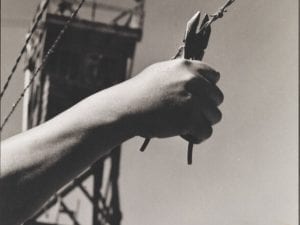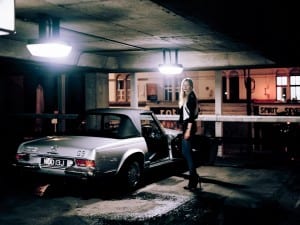Mashups is the new exhibition curated by Stuart Semple featuring five of the UK’s most exciting artists, who offer an intriguing insight into how a new generation is making sense of the complexities of mass culture.
Andy Warhol’s Green Car Crash (Green Burning Car I) made £36.3 million at Christie’s New York; Claes Oldenburg’s Yellow Girl’s Dress made $1.7 million at Sotheby’s New York; and Robert Rauschenberg last sold for $14 million at Sotheby’s New York. Auction prices are skyrocketing, especially for those artists considered to be part of the Pop Art movement: once the domain of the outsider, the artist bucking convention, Pop Art is now part of mainstream culture. Could it ever not be though? Pop Art is mass culture; mass culture is Pop Art. The boundary between is indefinable, blurred and indivisible. Pop Art hasn’t fallen by the wayside by any means though, artists such as Stuart Semple are considered the modern day equivalent, constantly negotiating the proliferation and bombardment of mass culture in their own lives and work.
Semple, an artist and curator based in London, has curated Mashups, an exhibition, which examines the use of mass culture — advertising, YouTube, the Internet, pop music, the fascination with “celebrity” — through five different artists’ work.
Pop Art has changed drastically since its inception in the 1950s; a direct reflection of the way mass culture has changed, as everything is faster, better, and a bit more gaudy and self-aware. “It’s interesting that we are still critiquing that culture now, maybe it’s harder for our lot to do it because it’s so much faster.” Semple doesn’t let the fact that it’s a bit faster deter him; rather he lets it serve as an impetus for the show.
Mashups is currently on at the Kowalsky Gallery at DACS, the Design and Copyright Society, London. A rather fitting venue, as the artists exhibiting, Nicky Carvell, Adham Faramawy, Nathan James, Piers Secunda, and Semple, all appropriate from commercial culture — whether it be an idea, an image, or a theme. DACS functions to protect artists and visual creators from the act of appropriation; a rather ironic twist given that the show is inherently about the act of appropriation.
The exhibition, which is curated by Semple (and at which he is an exhibiting artist as well), was initially conceived of vaguely as an artist-curated group exhibition. DACS approached Semple with the proposition for the show, and Semple took it from there, approaching each artist individually and asking if they would be involved: “None of them knew each other before the show. They were all making their own work very quietly in different places.” The exhibition is all the more interesting for that reason, as the show is about appropriation — we therefore become self-consciously aware that though the artists’ works fall into somewhat the same category they have not necessarily drawn off each other. Although Semple admits, “I already knew about them… some of them I’ve known about for a long time. They are people that have inspired things that I’ve done.”
Semple has taken the idea of appropriation and mash-up, or the mixing together of different things, one step further and together, with Carvell, Faramawy, James, and Secunda, created one massive collaborative piece for the show. Each artist took the work in turn, at their studios, and added to it: a risky venture perhaps, but one that appears to have paid off. Semple, when asked a month ago, what he thought the end result would look like, replied slightly hesitantly: “I’m not sure how its going to end up, I mean it could be a disaster… In a way it’s going to be a mashup.” The risk appears to have paid off.
The exhibition doesn’t try to predict the future of Pop Art, of how it will unfold as an art movement, but rather examines the here and now of it. How artists as individuals steer through mass culture, constantly being bombarded by images, theories, adverts, and ideas, and form their own meaning through it. “I think everything is pop, everything is mass culture, everything is pop [sic], and there is room for urban art and graffiti art in that, but I don’t think that is its future. I think that’s a recording of where it is now. I don’t think we know because we can’t predict the technology.”
Semple continuously refers back to technology, how it is used by artists in their work and the avenues it opens up. Faramawy, a Slade graduate, examines film as a physical medium and as a form of communication: his work is film-based, but also sculptural — often using the actual object (television set etc.) as a form. As Semple points out, “Imagine if Warhol had a ten megapixel camera or YouTube…?” His work might just have been eerily similar to the work of Faramawy, James or any of the exhibiting artists.
Technology plays a role in the curatorial aspect of the exhibition as well: the show closes with short videos documenting the artists; a not entirely novel idea (galleries such as Tate have been doing it for years), but completely relevant and a beneficial method of allowing a glimpse into the creative process of artists. This opportunity wouldn’t have been available, or necessarily affordable, 50 years ago. Again, a technological advance, which is determining the way we view art and artists themselves. Is it taking away the mystery, the enigma of the “Artist” (as photography took away the “aura” for Walter Benjamin)? Not really. If anything, Semple is utilising technology to his advantage, just as Pop Artists of the 1950s and 60s utilised low subject matter, packaging, and the cultural detritus of advertising, to their own advantage in their work.
Semple’s aim is simple: “I’m hoping that people will gain an idea that popular culture can be utilised by them, that they don’t have to be passive in it…grab bits of it, put them back together and create something new. It’s an empowering idea, I think that that’s possible, but all the artists in the show have demonstrated that it’s do-able and it is being done.”
Mashups was showing at the Kowalsky Gallery, Design and Copyright Society, London, until 12 September 2008. www.kowalskygallery.co.uk.
Niamh Coghlan





